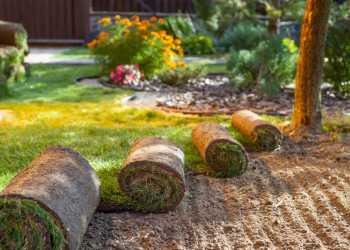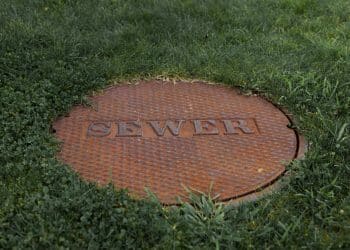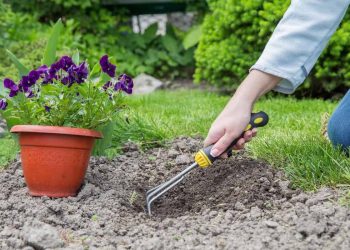Table of Contents
Weeds are the major reason for economic loss in crop production, and they reduce the quality and quantity of the main crop. They compete with the main crop in the field or lawn for food water and land. To eliminate the weeds to obtain a good yield, weed killers come into action.
Weed killers are classified into two types, selective and non-selective weed killers. Selective weed killers destroy the specific type of weed species leaving non-targeted plants, whereas non-selective weed killers are used to clearing a complete patch of land. Most of the weed killers are water-soluble and are applied using spray kits. Weed killers play a vital role in stopping and killing the growth of weeds, but they can be effective only when you apply them with the correct timing.

Application of Weed Killers
Weed killers can be applied in many ways. The most suitable method of application is set by the weed being treated, the weed killer who is being applied, and the site of application. Here are the ways to apply weed killers.
Foliar application:
In this method of application, a weed killer is directly applied to leaves and stems of the plant. A surfactant is needed to make the weed killer infiltrate the plant cuticle, a coating present on leaves and stem of the plant. This method of application is further classified into three categories; they are:
- SPOT APPLICATION: In this method of applying the weed killer must be applied directly to the target plant and avoid spraying the weed killer to the main plant. For this method of application, tools like a motorized rig with spray hoses, hand-pumped spray, or squirt bottles are used. These tools work accurately in targeting tiny parts of the plant in a dense field.
- WICK APPLICATION: In this method of application, the weed killer is applied to foliage and stem of the plant using sponge or wick. Usage of wick eliminates the dripping of the weed killer on the desired plant.
- PROTECTED SPRAY: In this method, a non-selective weed killer is applied to target plants by covering the desired plants with cover. This method is expensive. This method is mostly useful for plants like jasmine, cassava, banana.
Soil Application of Weed Killers:
Soil-applied weed killers play an important role in controlling the weed. Some types of weed killers like Early preplant, preplant incorporated, and preemergence is applied to the soil. Early pre-plant weed killer is applied weeks before planting. This is most commonly applied in cornfields. Soil application of weed killer is most effective for eliminating weed.
- SURFACE APPLICATION: Soil active weed killers are uniformly applied on the surface of the soil with the help of a spray kit to eliminate the weeds from the lawn. The weed killer who is applied is left undisturbed.
- SUBSURFACE APPLICATION: In this method of application, a weed killer is applied 7-10cm below the soil surface. The weed killer is applied in a concentrated band of the soil. This method plays a crucial role in controlling perennial weeds.
- BAND APPLICATION: In this method of application, a weed killer is applied to a restricted band with crop row leaving inter rows present in the untreated band to reduce the cost.
- FUMIGATION: In this method of application, the weed killer is incorporated into the soil to produce gas. This gas helps in destroying the weed seeds and weed plants. The weed killers used are called fumigants. This method is widely used for eliminating perennial weeds and weed seeds
- HERBIGATION: In this method of applying the weed killer is mixed up with water and irrigated by surface and sprinkler system. This method is widely used for chilies and tomato by Indian farmers.
Best Time to Apply Weed Killers
The best time to eliminate weeds from the lawn is, when there are in the early stage of their growth, weeds are weak and fragile in the summer months. Weed killers are applied when weeds grow actively. Weeds generally grow in April, September, and October. The best time to apply weed killers is in May. In May, spring seeds start to germinate in the lawns. This will benefit from destroying spring weeds as well. Weeding the lawn in the autumn season is more manageable than killing winter hardened weeds in spring.
Make sure that soil has moisture in it before applying the weed killer because weed killers harm the desired plants in drought conditions. After all, wet grass dilutes the weed killer, which leads to less efficiency. Do not apply weed killer when it seems like raining in the next 12 hours because rainwater flows in entire land affecting the non-targeted plants present in the field or lawn.
Avoid applying weed killer in strong sunshine. During summers, apply weed killers in cool evenings for better results. Use weedkillers one to two weeks after fertilizing the plants. Fertilizing helps the plant to grow well, and also, the weed killer, which is applied after fertilization, gives the best result in destroying the weeds.
Do not mow the grass for two to three days before and after applying the weed killer. Do not apply the weed killer in extreme hot and cold conditions because weed killers won’t be effective in too hot or cold weather because, in hot weather, the liquid weed killer will evaporate before it gets absorbs. In cold weather, the weed killer will freeze.
Most of the weed killers work effectively at the temperature of 65-85 degrees. Apply the weed killer only after knowing the best temperature for good results. Winter is not an excellent option to treat weeds because the weeds are snow-covered, and soil will be in frozen condition. You will most likely have snow-covered, frozen ground. Fall is a great option to treat the weed. Apply weed killer during the warmest part of the day.
Weed Killer Properties
The weed killer is said to be ideal if they control the target plants effectively in the desired period without harming the desired plants and degrade themselves in the soil naturally. Weedkiller molecules get decomposed to carbon dioxide water and salts through photochemical or biological reactions.
WATER SOLUBILITY: The most crucial factor to determine a good weed killer is based upon the solubility of the weed killer in water. Water-soluble weed killers have low levels of absorption in the environment, and they are mobile. Microbial decomposition takes place in water-soluble weed killers.
ADSORPTIVE POTENTIAL: Adsorption is the process of attracting the ions or to the surface of a solid. Weed killers get absorbed into clay or organic matter of soil after application. Weed killers with more absorptive potential are more tightly bound to the soil. The extent of weed killer absorption decreases with a decrease in organic content in the weed killer.
PHOTODECOMPOSITION: The decomposition of weed killer in the presence of sunlight is called photodecomposition. This depends on several factors like latitude, season, time of day, pollution, litter, plants, weather, etc. Photodecomposition is done using UV light and mostly present on cloudy days.
Commonly Used Weed Killers
2,4-D: It’s a weed killer which belongs to the phenoxy group. It is used in turf and no-till field crop production. This weed killer is widely used in the world.
Atrazine: This weed killer is used in corn and sorghum fields to destroy weeds and grasses. It is available at less cost. This weed killer is a photosystem inhibitor.
Clopyralid: This weed killer belongs to the pyridine group. It is mainly used in turf rangeland fields. It is used to control noxious thistles.
Dicamba: It is soil, active weed killer. It is used on turf and cornfield
Glyphosate: This is a systemic non-selective weed killer. It is used in no-till lands.
Imazapyr: It is a non-selective weed killer. It is used to control weeds, including terrestrial annual and perennial grasses.
Imazapyr: It is a selective weed killer used to control annual and perennial grasses and broadleaf weeds. Imazapyr kills plants by incorporating the production of branched-chain amino acids.
Metolachlor: This is a pre-emergent weed killer. It is widely used to control annual grass in corn and sorghum fields.
Paraquat: This type of weed killer is used in no-till burndown land and coca fields. This weed killer is used for commercial purposes.
Picloram: This weed killer belongs to the pyridine group. It is mainly used to control unwanted trees in pastures.
KNOCKDOWN WEED KILLER: This type of weed killers works effectively in eliminating weeds, and they are cost-effective. Knockdown weed killers improve the timeliness of planting. Usage of knockdown weed killers reduces the erosion of soil compared to other weed killers. They also help in improving the texture of the soil. This weed killer controls the weed seedling process effectively. They control the weeds at a higher rate. Double knockdown weed killers prevent the growth of glyphosate resistance. They reduce the number of potentially resistant weeds in the cropland. Overuse of knockdown weed killers, weeds gain resistance. Make sure to select appropriate target plants before incorporating double knockdown weed killers. Use 10ml per liter of water. Make sure that the weed killer is not in contact with non-targeted plants.







